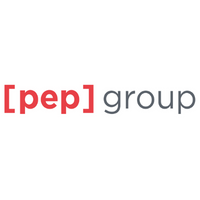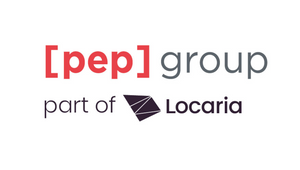
“In-Housing Is Reshaping the Industry For A New Creative Production Mix”

Pepelatz Production is a proud supporter of LBB. Over the upcoming months, as part of the sponsorship of the Ukrainian edition, we will be spending time with some of the personalities at the forefront of the global production industry today.
In this conversation, we speak with Mikhail Pimenov, founder and CEO of Pepelatz Production about the shape of things to come.
LBB> The industry is reshaping with both brands and agencies in-housing at the same time. What do you think that means for the business?
Mikhail Pimenov> Well, first of all, I think brands are becoming more flexible in what they can shop for. Previously, it was a classical model, so being a brand manager or marketing director, you would have your usual suspects: you would go to agencies for the creative and strategy, then you had the media agency doing the media planning and buying - and that's pretty much it. The agency took care of all the third parties like a guardian, so you kind of didn't need to bother over the production, PR, BTL or anything like that.
Then what happened is that with digital everything started to reshape because classical network agencies couldn't offer digital expertise right away. So brands had to look towards digital agencies to come up with solutions for the digital leads. The digital agencies then realised that they can drop the word ‘digital’ because they have become agencies that can fulfill the whole spectrum. So all of a sudden, the classical agency or let's say, the creative agency, found themselves even deeper in the corner as they didn't have the digital expertise or they had to revamp themselves to become digitally savvy.
LBB> What do you think this means for production?
Mikhail> Over the last ten years we've seen another cycle of reshaping, especially in Europe and the UK. “Pandora’s box” was opened when brands realised they could shoot a commercial directly with a production company and so a decoupling came into play. So then agencies kept their role as brand guardians but they didn’t get offered the production budget. When budgets were scrutinised under the microscope, we, as an industry, found a way to optimise the way marketing budgets are spent in the modern day.
With the ability to now work directly with a client, the big production agencies have been developing themselves and adding more and more to their services, not only in terms of content and localisation but content creation, post production and more. So for them to add a creative arm would be just a logical step.
What is happening right now, is yet another cycle from those who are starting out in the industry or starting new ventures, realising that it has to be a mixed offer of both creative and production and that the speed to market is really important. This “always on” mode is mega important these days because of the fragmented media landscape, because you need to be there for your audience, you need to be relevant and relevance comes with the speed of reaction and the understanding of what kind of content you have to put in front of your consumer.
LBB> With more and more people working direct-to-brand now, do you think there still remains enough understanding over media placement in the process?
Mikhail> I think media will not go anywhere as an expertise. Let's look at the example of MediaMonks. They are developing both offerings - the production and the media offering. So that means that they understand that they possess data and media planning expertise, and then they produce it according to the plan that they sell to the clients. So I think media will not go anywhere as a strong asset whether it's part of the group, or whether it's just a separate company that you partner with.
LBB> And so, do brand CMOs now need a better understanding of the whole end-to-end market? Whose job is it to educate those people?
Mikhail> Brand CMOs are in the most difficult situation right now because they are required to know so many things at once, and not only in their own business. They have to know about the way they need to tackle different target groups through different channels with different sets of instruments - and there are numerous now. So I think CMOs will have to rely either on experts inside the company or experts they partner with, because one person cannot be expected to know everything.
LBB> Sometimes the elongated RFI / RFP process slows that down. How can CMOs find those right partners?
Mikhail> That's a good question. So what happens is that big brands, when they come up with RFIs or RFPs, the criteria is such that eventually it's only the list of usual suspects who are ready to tackle the RFP. So sometimes it’s a case of brands being too big to give the task to a smaller competitor, or a smaller operation. That’s why it's the same five or six companies that are appearing in every RFP. And that’s where consultants, if they're involved, are trying to get a better mix.
With smaller brands, sometimes it's very hard to jump into the RFP process, because it's very hard to learn when and where they need it. So instead you pursue personal sales and networking, and then with a bit of luck, you get there, you get the clients and you can actually present yourself. It's not like a platform or marketplace where you can just come in. Moving forward, maybe it's the role of consultancies (the likes of APR or MurphyCobb & Associates) to balance it out to actually push clients to look beyond the list of usual suspects.
LBB> So based on that, do you feel that in an ideal world, what you want is a brand person to look at each market and choose suppliers for different markets depending on their areas of expertise?
Mikhail> The honest answer is I don't know, because it very much depends on the brand. When MediaMonks won the BMW Mini account, they established an office in Berlin just for this client. So maybe that was the requirement. So they've sold the capability first, and then they’ve put the dot on the map where they need to establish an office for the purpose of creating a centre of excellence out of Berlin for this particular client.
So a global brand could decide that they want a centre of excellence in a certain part of EMEA and then use suppliers and partners from this part of the world, or for the sake of lead time, they’d use somebody else too. Suppliers and partners will preach that with two different companies you will have two different communication lines and if you only choose one you get a more streamlined approach. What's going to be the decision making process for the brand? It's a big question.
I think it’s about testing the waters and pragmatically trying a new model. Heineken created a bespoke creative agency and then use Publicis as well for the execution. So they now have a dedicated agency just for their brands under the Heineken Corporation. Yet another example of a new breed.
LBB> Lots of clients work with different agencies across lots of brands and tech - they’re reliant on the tech platforms within their production partners, post partners, delivery partners. How important do you think it is for clients to take hold of all their assets and manage it themselves?
Mikhail> People come and go, and so I think for the brand's sake, to create continuity, it's always better to have some platforms kept internally. What I usually find is that clients are reluctant to get into new systems, because for them, they are already bureaucratic enough with their internal reporting of their internal systems. And then there is yet another system that they have to learn. So usually, what happens is that if you are more diplomatic in the approach, and help them navigate it, it will be easier for you to get them to use it if you are settling them onto your tech.
LBB> And what effect has client financial pressure had on creativity is around the world?
Mikhail> It always depends on the category. Pressure is not a bad thing after all, and we’ve seen some fine creative campaigns coming out of brands and agencies in various categories.
For the past 10 years since the financial crisis, what happened is that procurement have got a bigger role. Before that, you knew that procurement was there but they were taking care of direct buying of something tangible. But then all of a sudden, because the bottom line was under pressure, procurement got a bigger role. However, what happened is that procurement at that point in time had very little knowledge of what was happening within marketing. So that was the biggest learning curve, when procurement was really pressing on prices and rates yet marketing was still educated to come up with great creative. So I think that was the initial dilemma of lack of traction b/w marketing and procurement.
What is happening right now is that marketing brands have learned to come up with great creative ideas under the budget pressure, especially in this digital environment where you can actually come up with great ideas with a fraction of the budget now. So procurement have learned to become more professional in the area of marketing services.
LBB> What made you start a production content arm?
Mikhail> Back in 2009/2010, right after the financial crisis, what I witnessed as a managing director of a creative agency network in Ukraine is that some of my clients I had to write off from P&L because they had gone on to production companies directly, these were clients with predominantly adaptation work only. Because de-coupling became possible, I couldn’t keep the clients in my market and that applied to the whole region. So when I was thinking of creating something of my own, I wanted to certainly come up with an offer that I can export. I didn't want to make yet another creative agency and pursue local clients. Based on my experience described above, it came naturally to launch a production company, which I can sell as an outsource solution.
For me a good example was the Ukrainian IT industry, because it has been tremendously successful for Ukraine, it has built a multi- billion dollar business for outsourcing IT services out of Ukraine and it was a purely export oriented offer. Similarly, I wanted to build something that I can offer, as an expert outsource service in the creative industry.
LBB> Why is the service industry becoming so strong in Ukraine?
Mikhail> This is the legacy of our higher education, the institutes that we have and the human resource. In the beginning of 2000, the big outsourcing resource was concentrated in India. However, since so many companies were sourcing from India, there was already a deficit - the competition was so high that the prices were going up. So companies started to look elsewhere. The legacy is built on very good engineers, very good mathematicians, very logical minds, yet striving to be creative in finding solutions to complex problems – and it's concentration in Ukraine is very high.
LBB> What are your predictions for the next five years in the production environment?
Mikhail> I see two things happening. Right now we will see a wave of new start-ups, which I mentioned above, who will utilise a mixed offer of the creative and production. That will bring a new cycle of new independents with future interest from institutional investors and bigger industry players.
Secondly, what I see is that production is going to be pressed for automisation solutions which is a direct threat to human work. Not that it would completely erase a human factor, but some of the professions will be challenged.
And I think within this year, we will see new models tried by brands and agencies. We will see in housing models, whether it's pure brand or whether it's a joint venture with the brand and advertising agency, creation of centres of excellence or bespoke agencies for particular brands. Production will further be mixing with creative services and start to provide a vertically integrated approach from ideation to execution to deployment of the content across channels.












